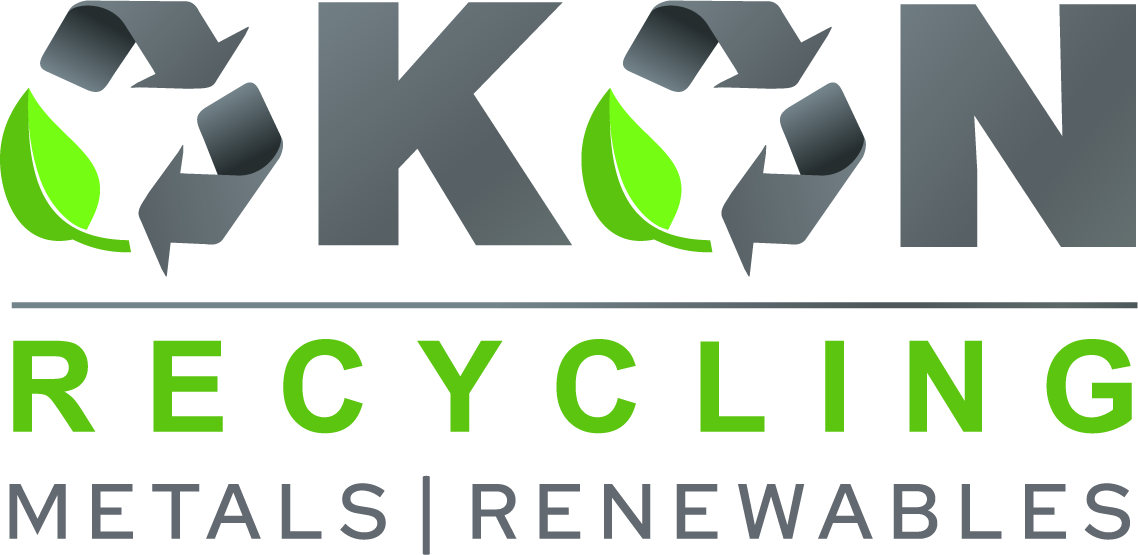5901 Botham Jean Blvd, Dallas, TX 75215
Understanding the Environmental Impact of Metal Waste
April 5, 2025Each year, the world generates over 2 billion tons of metal waste, highlighting the urgent need to address its environmental impact. From depleting finite resources to contaminating ecosystems, the consequences of unchecked metal disposal are extensive and potentially devastating.
Metal waste poses a significant threat to our planet. When improperly managed, it can leach toxic substances into soil and water, disrupt ecological balances, and contribute to air pollution through energy-intensive processing. The Environmental Protection Agency reports that metals make up a considerable portion of municipal solid waste, with millions of tons ending up in landfills annually.
Yet, within these challenges lie opportunities for sustainable solutions. Innovative recycling techniques, responsible waste management practices, and a shift towards a circular economy offer promising pathways to reduce the environmental impact of metal waste.
Resource Depletion and Energy Consumption
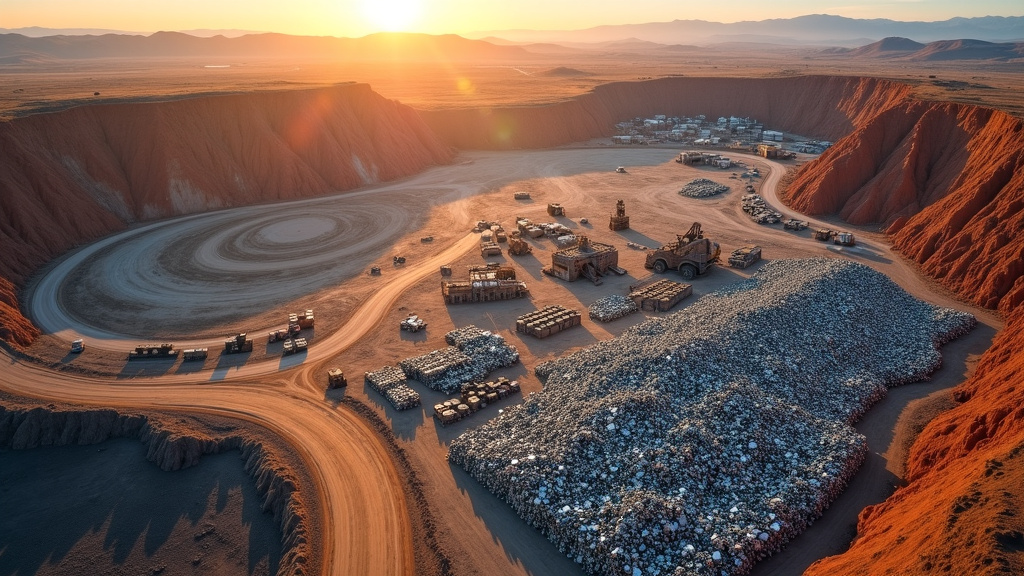
The extraction and production of metals take a significant toll on our planet’s natural resources and energy reserves. As global demand for metals surges, the environmental consequences of traditional metal production methods become increasingly severe.
Here, we examine how metal waste compounds these issues and explore the transformative benefits of metal recycling in conserving resources and reducing energy use.
The Hidden Costs of Metal Production
Mining for virgin metals is a highly resource-intensive process. It requires vast amounts of water, fossil fuels, and land, often leading to deforestation, habitat destruction, and water pollution. The environmental impact extends beyond extraction.
Once extracted, raw metals undergo energy-intensive processes to become usable materials. Take aluminum, for example. Producing just one ton of new aluminum from bauxite ore requires a staggering 14,000 kWh of electricity, enough to power the average U.S. home for over a year.
The situation is similar for other metals. Steel production, responsible for about 8% of global CO2 emissions, relies heavily on coal-fired blast furnaces. Copper mining and smelting consume significant energy while generating toxic byproducts.
Metal Waste: Adding Fuel to the Fire
When metal products end up in landfills, we lose valuable materials and exacerbate resource depletion. Every discarded can, appliance, or electronic device represents wasted energy and raw materials that must be replaced through more mining and production.
This wasteful cycle strains our planet’s finite resources. At current consumption rates, some metal reserves could be depleted within decades. The urgency to break this unsustainable pattern is clear.
The Recycling Revolution: A Win for Resources and Energy
Metal recycling offers a powerful solution. By reprocessing existing metals, we can significantly reduce the need for virgin ore extraction and energy-intensive primary production. The benefits are substantial:
1. Aluminum recycling is a prime example of energy conservation. Recycling aluminum requires 95% less energy than producing it from raw bauxite, leading to massive reductions in greenhouse gas emissions and resource consumption.
2. Steel recycling saves about 60% of the energy needed for primary production. Given steel’s ubiquity in construction and manufacturing, widespread recycling could greatly impact global energy use.
3. Copper recycling uses just 15% of the energy required for mining and refining new copper. This conserves energy and helps preserve dwindling high-grade copper deposits.
Beyond Energy: The Ripple Effects of Metal Recycling
The benefits of metal recycling extend beyond energy savings. By reducing the need for mining, we protect biodiversity, preserve water resources, and minimize air and water pollution associated with ore extraction and processing.
Recycling also plays a crucial role in building a circular economy. It creates jobs in collection, processing, and manufacturing sectors while reducing reliance on imported raw materials. This enhanced resource security is particularly important for countries lacking domestic metal reserves.
As consumers and businesses, we all have a role in this recycling revolution. By properly disposing of metal waste and choosing products made from recycled materials, we can drive demand for sustainable metal production and help conserve our planet’s precious resources.
Pollution and Ecosystem Disruption

Improper disposal of metal waste severely threatens the environment by contaminating soil and water, disrupting delicate ecosystems. This pollution can have far-reaching consequences on biodiversity and ecological balance.
Here, we explore the various forms of pollution caused by metal waste and their environmental impacts.
Soil Contamination
When metal waste is improperly discarded, it can leach toxic substances into the soil, with dire consequences for plant life and soil-dwelling organisms. For instance, a study in a former mining area found that high levels of lead and cadmium in the soil led to stunted plant growth and reduced microbial activity.
Soil pollution affects more than just plants; it can impact entire food chains. Contaminated soil can affect agricultural productivity, potentially compromising food safety and security for both wildlife and human populations.
In severe cases, metal pollution can create “dead zones” where very little life can survive. These barren areas starkly remind us of the long-lasting impact of improper waste disposal.
Water Pollution
Metal waste entering water bodies can devastate aquatic ecosystems. Heavy metals like mercury, lead, and cadmium can accumulate in the tissues of fish and other aquatic organisms, leading to health problems and potential population declines.
A prime example is the Guadiamar River pollution in Spain following a mine tailing dam failure. The toxic spill led to massive fish die-offs and long-term contamination of the river ecosystem, affecting wildlife in the nearby Doñana National Park, a UNESCO World Heritage site.
Moreover, metal pollutants can persist in aquatic environments for years, continuing to cause harm long after the initial contamination. This persistence makes water pollution particularly challenging to address and underscores the importance of proper metal waste disposal.
Air Pollution
While not as immediately apparent as soil or water pollution, improper disposal of metal waste can also contribute to air pollution. Incinerating waste containing metals can release toxic fumes and particulate matter into the atmosphere.
For instance, burning e-waste to recover valuable metals releases harmful substances like dioxins and furans. These pollutants can travel long distances, affecting air quality and posing health risks to both humans and wildlife far from the pollution source.
Ecosystem Disruption
The cumulative effect of metal waste pollution is a profound disruption of ecosystems, manifesting in various ways, from altering species composition to reducing overall biodiversity. In polluted areas, metal-tolerant species may thrive while more sensitive organisms decline, leading to imbalances in the ecosystem.
A stark example of ecosystem disruption is the Rocky Mountain Arsenal Wildlife Refuge near Denver, Colorado. Once heavily contaminated with chemical weapons and pesticides, including metal pollutants, the area required extensive cleanup efforts. Today, it serves as both a cautionary tale and a success story in ecosystem restoration.
Bioaccumulation and Biomagnification
One of the most insidious effects of metal pollution is bioaccumulation—the process by which pollutants build up in an organism’s tissues faster than they can be excreted. This leads to biomagnification, where the concentration of pollutants increases as you move up the food chain.
The classic example is mercury pollution in aquatic environments. Small organisms absorb mercury from their environment, slightly larger fish eat many of these smaller organisms, concentrating the mercury in their tissues. This process continues up the food chain, potentially resulting in dangerous mercury levels in top predators like tuna or swordfish—and ultimately affecting human health when we consume these fish.
The far-reaching consequences of metal waste pollution underscore the critical importance of proper disposal methods. By responsibly managing metal waste, we can help protect our ecosystems, preserve biodiversity, and safeguard human health for generations to come.
Carbon Footprint and Climate Change
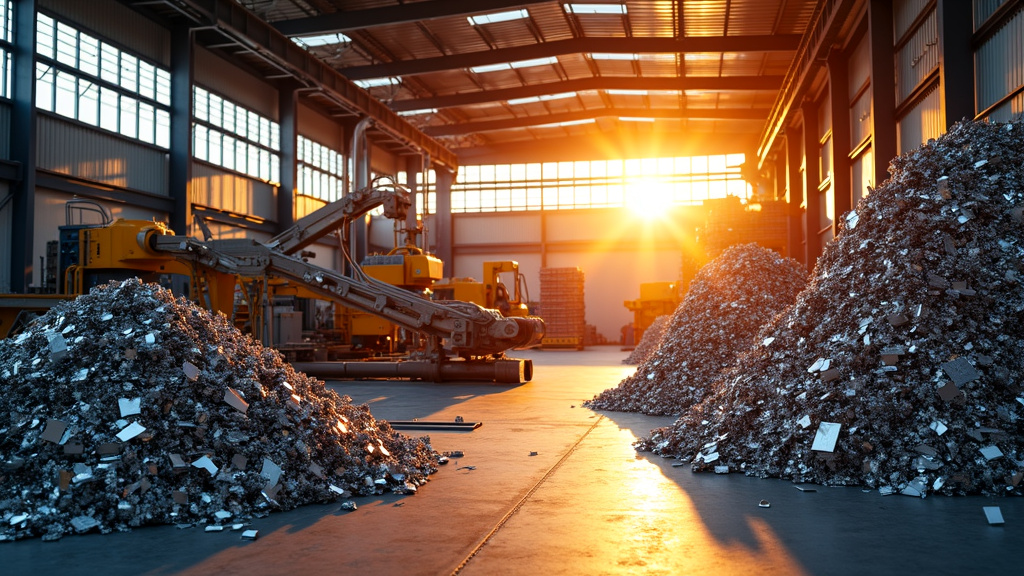
The metal industry significantly impacts our planet’s climate through its carbon footprint, largely due to energy-intensive processes and raw material extraction. By examining metal waste management practices, we can find effective strategies to reduce greenhouse gas emissions and mitigate the sector’s environmental impact.
Consider the contrast between virgin metal production and recycling. Research indicates that producing metals from raw materials majorly contributes to global greenhouse gas emissions. Mining, refining, and smelting are energy-intensive processes that release substantial CO2, accelerating climate change.
Recycling metals can dramatically reduce these emissions. By reusing existing materials, we avoid the energy-heavy extraction and processing of virgin ores, leading to less mining, reduced energy consumption, and significantly lower carbon emissions. For instance, recycling aluminum uses only 5% of the energy needed to produce new aluminum from bauxite ore.
Strategies for Reducing the Metal Industry’s Carbon Footprint
How can we leverage metal waste management to combat climate change? Consider these strategies:
- Boosting Recycling Rates: Implementing robust collection systems and incentivizing metal recycling can significantly increase the use of recycled metals, reducing energy use and associated emissions.
- Improving Recycling Technologies: Investing in advanced sorting and processing technologies can enhance the quality and efficiency of metal recycling, requiring less energy and reducing carbon footprints.
- Adopting Circular Economy Principles: Designing products for easy disassembly and recycling can extend the lifespan of metals and reduce the demand for virgin materials, cutting emissions and conserving resources.
The Impact of Effective Metal Waste Management
Prioritizing efficient metal waste management benefits more than just reducing emissions. Consider these impacts:
- Resource Conservation: Recycling metals preserves finite resources, reducing the need for environmentally harmful mining operations.
- Energy Savings: Recycling metals requires significantly less energy than virgin production, leading to lower overall carbon emissions.
- Landfill Reduction: Proper metal waste management diverts materials from landfills, reducing methane emissions and soil contamination.
The metal industry stands at a pivotal point. By embracing innovative waste management practices and prioritizing recycling, we can move towards a more sustainable future. It’s about reshaping an entire industry to align with our planet’s needs.
Sustainable Solutions for Metal Waste Management
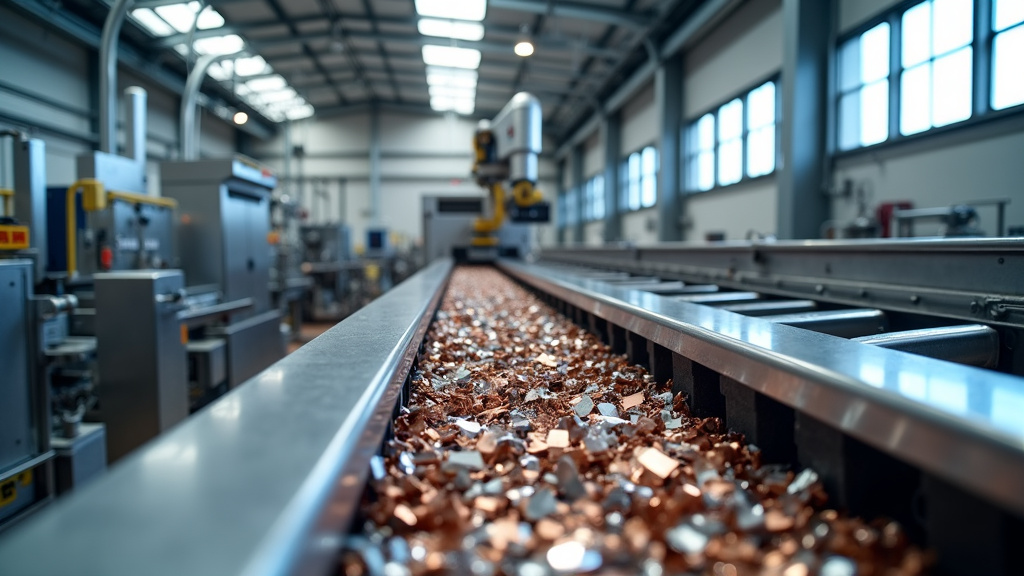
Finding sustainable solutions for metal waste management is increasingly important as environmental concerns grow. Innovative recycling technologies, circular economy principles, and best practices are changing how industries handle metal waste reduction and management.
Here are some groundbreaking approaches leading to a more sustainable future.
Innovative Recycling Technologies
Advancements in recycling technologies are transforming metal waste management. A key innovation is chemical recycling techniques, which break down complex metal alloys into their original components. This allows for the recovery of valuable materials that were previously non-recyclable.
For example, advanced sorting technologies like X-ray fluorescence (XRF) and laser-induced breakdown spectroscopy (LIBS) enable precise identification and separation of different metal alloys, enhancing the efficiency and effectiveness of recycling processes.
Furthermore, innovations in electronic waste recycling now allow for the recovery of precious metals such as gold, silver, and palladium from discarded electronics. This not only reduces the need for virgin material extraction but also addresses the growing challenge of e-waste management.
Adopting Circular Economy Principles
The circular economy model is central to sustainable metal waste management. This approach emphasizes eliminating waste, keeping materials in use as long as possible, and regenerating natural systems. In metal waste, this includes several key practices.
Extending product lifecycles is a fundamental strategy. Companies are implementing take-back schemes to encourage consumers to return products for repair or refurbishment instead of disposal, reducing waste and creating new revenue streams.
Another principle gaining traction is the “product-as-a-service” model, where companies retain product ownership and lease them to consumers. This ensures products are returned for refurbishment or recycling at the end of their life, rather than discarded.
Effective Practices in Metal Waste Reduction
Implementing effective practices in metal waste reduction is crucial for sustainable management. One approach is adopting lean manufacturing principles, focusing on minimizing waste throughout the production process, optimizing material use, reducing scrap, and improving efficiency.
Another practice is Extended Producer Responsibility (EPR) programs, which hold manufacturers accountable for their products’ entire lifecycle, including end-of-life management. EPR programs incentivize companies to design products that are easier to recycle or reuse.
Collaboration between industries is also a powerful tool in metal waste reduction. Industrial symbiosis, where one company’s waste becomes another’s raw material, is gaining popularity, reducing waste and creating new economic opportunities.
Success Stories in Metal Waste Management
Several regions and companies have successfully implemented effective metal waste management strategies, serving as inspiration. Sweden, for instance, has developed one of the world’s most advanced recycling systems, with nearly 99% of household waste either recycled or converted into energy.
In the Netherlands, the Amsterdam Circular Strategy aims to reduce the city’s reliance on raw materials by 50% by 2030. This initiative focuses on promoting circular design, encouraging sustainable business practices, and fostering collaboration between different sectors.
On the corporate front, companies like Alcoa have implemented closed-loop recycling programs with their customers. By collecting and recycling scrap aluminum from customers’ manufacturing processes, Alcoa has significantly reduced waste and energy consumption in aluminum production.
These success stories demonstrate that sustainable metal waste management is not only possible but also economically viable. By adopting innovative technologies, embracing circular economy principles, and implementing effective practices, industries can significantly reduce their environmental impact while creating new opportunities for growth and efficiency.
How Okon Recycling Can Help with Environmental Impact of Metal Waste
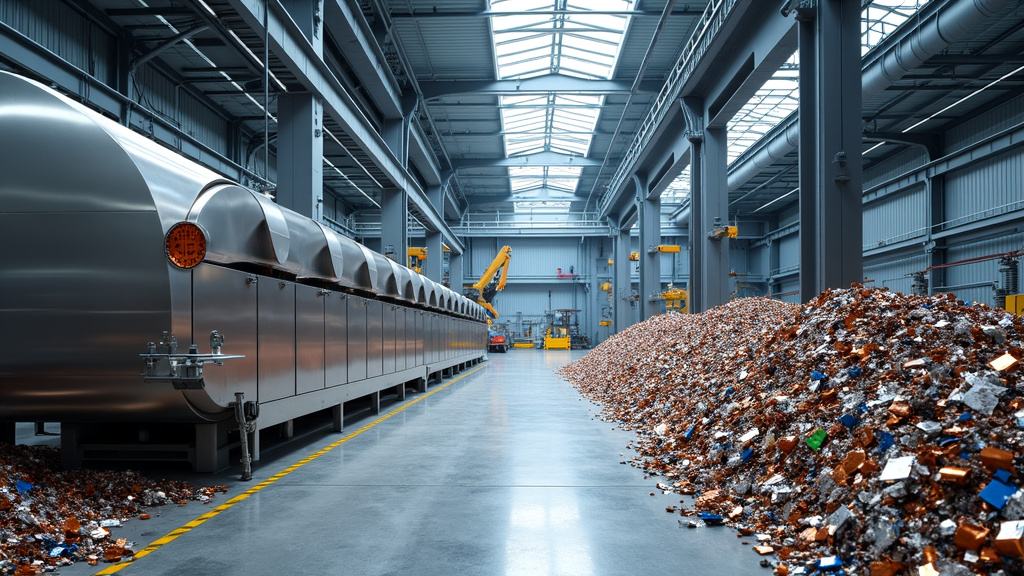
As we face increasing challenges with metal waste, innovative solutions are essential. Okon Recycling, with over a century in the metal recycling industry, is demonstrating that old dogs can indeed learn—and perfect—new tricks. With extensive expertise, Okon isn’t just participating in recycling; they’re redefining it.
What distinguishes Okon in this field is their commitment to sustainability and use of cutting-edge technology. Imagine a facility where discarded metal avoids landfills and gains new life. This is the reality Okon Recycling has created.
Let’s explore how Okon is reducing the environmental impact of metal waste:
State-of-the-Art Recycling Technologies
Okon Recycling doesn’t just talk the talk; they walk the walk with their advanced technologies. Their Dallas facility is a marvel of engineering, equipped with high-powered shredders and sophisticated sorting systems that would impress any environmentalist.
These aren’t your average recycling bins. Okon’s equipment can handle industrial-sized magnets and chillers that most consider unrecyclable. It’s like watching a metal-eating monster with a green conscience—efficiently breaking down complex materials while minimizing environmental impact.
According to the Environmental Protection Agency, recycling one ton of aluminum cans conserves over 1,665 gallons of gasoline. Multiply that by the thousands of tons Okon processes annually, and it results in a significant reduction in our carbon footprint.
| Process | Energy Saving | GHG Emission Reduction | Water Usage Reduction |
|---|---|---|---|
| Lithium-ion Battery Recycling | 77% to 89% less energy | 58% to 81% less GHG emissions | 72% to 88% less water |
| Aluminum Recycling | 95% less energy | Significant reduction in GHG emissions | – |
| Steel Recycling | 60% less energy | Significant reduction in GHG emissions | – |
| Copper Recycling | 85% less energy | Significant reduction in GHG emissions | – |
Taking Action: Reducing Metal Waste’s Environmental Impact
The journey towards reducing metal waste’s environmental impact is ongoing, but you don’t have to navigate it alone. Okon Recycling, with its century-long expertise in sustainable metal recycling solutions, stands ready to support your efforts.
Whether you’re an individual looking to responsibly dispose of metal items or a business seeking to improve your waste management practices, partnering with experienced recyclers can provide the guidance and infrastructure needed to make a real difference.
We encourage you to assess your current metal waste practices. Are there areas where you could improve? Could your business benefit from a more structured approach to metal recycling? By taking action today, we can work towards a future where metal waste no longer poses a significant threat to our environment.
Contact Okon Recycling at 214-717-4083 to learn how we can support your journey towards more sustainable metal waste management.
